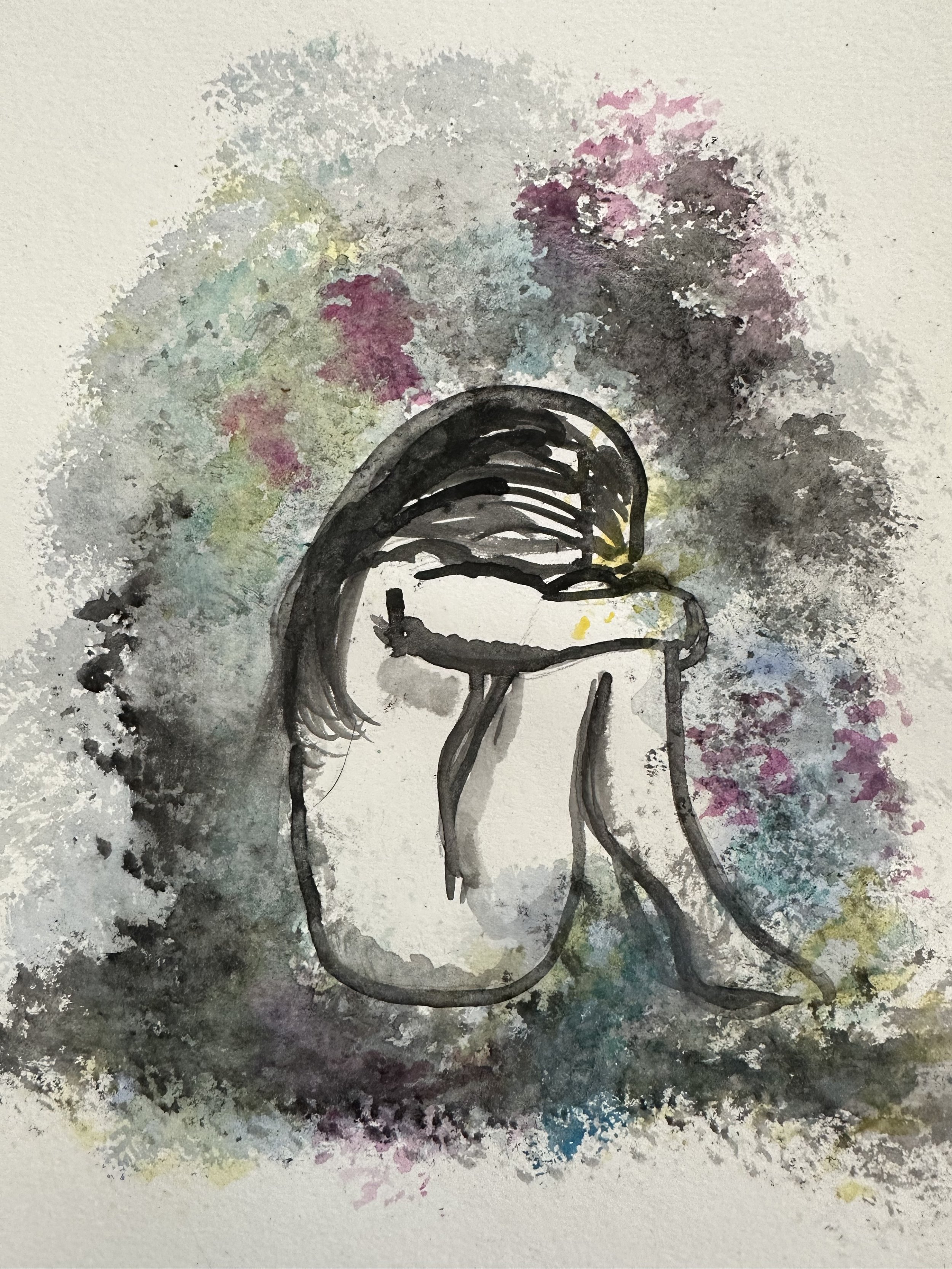Dear fellow person with a mysterious illness,
I think about you a lot. I think about how I want to find the answers for you, just like I want to find the answers for myself. I think about what I want to share with you that I’ve learned so that you might feel less alone… to help ease your suffering. I want to tell you that our stories most definitely overlap in many ways, although they are also unique to us. As I weed through all that, I want to share with you about how we can begin to rise from here (Part II), but I want to begin by attempting to answer the question of: how did we get here?
First of all, there is a term for us. Coined by Sarah Ramey in her book, The Lady’s Handbook for Her Mysterious Illness:
A WOMI is “a woman with a mysterious illness… She is exhausted, gluten free, and likely in possession of at least one autoimmune disease. She is allergic to ____ (everything), aching from tip to toe, digestively impaired, and on uneasy terms with her reproductive system. She is addled, embarrassed, ashamed, and inflamed.”
Disclaimer #1: I realize that not all people with these conditions are women, and maybe if she had written her book a few years later she would have used “person” or “human” instead, but here we are. And yes, the people who come into my practice and whom I know personally with these types of medical issues are, overwhelmingly, women. Ramey’s book is a deep dive into everything WOMI, and I highly recommend it. This two-part blog post series is a complement to that… a fairly comprehensive albeit introductory look, knowing there’s more to explore in her book if you wish.
Before I share some of my original thoughts, which I promise I have, here is another excerpt from Ramey’s book to further set the stage of the WOMI condition, because I find it to be so profound:
“At any given moment, a WOMI may be experiencing one, seven, twelve, or fifty-three of the following:
Phew… if that list makes you feel seen, sad, overwhelmed, heavy, or any other emotion - pause, take a deep breath, and just let yourself feel that.
So, how did we get here? How did we end up with such a litany of symptoms, and furthermore, symptoms that have (most likely) been unrecognized by conventional doctors, leading to our systematic gaslighting?
The following has taken me years to figure out based on my own health history timeline, that of my patients, and through reading (we can call it research if we’re fancy). As previously mentioned, while each of our stories is uniquely our own, there is definitely a common thread woven through them all, in which a general pattern emerges, and this is what I am sharing in Part I of this exposé.
One more disclaimer, before I go on: I am a straight cis white woman, which is the only perspective I can write from. Most of these steps will be vastly more complex with intersectional nuances for non-straight cis white people.
You are a highly sensitive person (HSP) - This could be the way you were born or your system became highly sensitized through trauma. Dr Elaine Aron coined this term in 1996 and it’s grown from there. The absolute basics of HSP, according to Dr Aron, are: it’s normally found in 15-20% of the population, it is often misunderstood, it’s a trait found across species (not just in humans), you’re more “sensitive” than most people but that isn’t innately good or bad (it depends on how your culture views it), and the HSP brain processes information and reflects on it differently (and more deeply) than those without HSP. And essentially - your nervous system is more easily overwhelmed and sensitive to stimuli.
There is an initial triggering event - Usually there is a starting point to your symptoms, even if this only becomes obvious in retrospect. But the actual point where things change is often one of the following:
Medication, surgery, or another Western medical intervention
A virus, parasite, or bacterial infection (including, but not limited to: Lyme disease, Epstein Barr virus aka Mono, or COVID)
Exposure to toxins (e.g. mold)
A really big trauma / stressful event / time period
In The Background - At the time one of the aforementioned happened or started, in the background there was also probably: high stress, standard American diet (aka a severely nutrient-deficient diet), poor sleep and other general “unhealthy” lifestyle factors (think: college). Because at this time you weren’t unwell, you weren’t necessarily prioritizing health and wellness (yet).
It Begins - So your symptoms begin, maybe more vague at first, or just in one system of the body. More simple, less widespread. Yet Western medicine most likely runs a few blood tests, shrugs their shoulders, and deems you “normal.” Most likely you’re also starting to experience a lot of medical gaslighting at this stage. Or maybe you are “lucky enough” to get a diagnosis, but it’s an unhelpful one because they have no idea how to appropriately treat or help you heal.
The Disconnect From Self - By now you have unexplainable symptoms that are not being remediated by the very people you’re supposed to turn to for medical help, and you’re told you’re normal, despite feeling like shit… and so you disconnect from yourself and your symptoms. If you have previous trauma, then this might already be something that your nervous system and brain do as a form of self-protection. Your health issues at this point are either perpetuating an already established trauma response, or they’re initiating a protective trauma response in trying to shield you from the initial trigger.
Deluding Yourself and Others - At this point maybe you just try to go on living your life as normal despite your symptoms, because what can you do when doctors say you’re fine? You might be getting by… just barely, but enough. Or you might start to try and search for alternative help with various levels of success. Most likely at this point, though, you’re still kind of getting by, disconnecting from yourself and your symptoms because you don’t know what they’re trying to tell you and no one has been able to help you figure that out.
The Brain Response - Meanwhile, your brain and nervous system are in a trauma loop, therefore further sensitizing your already sensitive nervous system. As time goes on, you undoubtedly continue to encounter more triggers - viruses, mold, high stress, etc. Because you are becoming increasingly sensitive, your reactions worsen with each trigger, and continue to accumulate. With this accumulation, your capacity to have a healthy response to stressors becomes smaller and smaller… on a deeply physiological level. So, despite the doctors saying you’re normal and despite some of your interventions (which you might be kind of desperately and blindly trying at this point), you get sicker. You start to have more of the symptoms from the chart.
The Decline - Now your chronic mystery illness has progressed to include many symptoms across many systems of your body. At this point, you’re probably starting to grasp at any glimmer of hope for an answer or a solution to your ailments. The magic fixes the wellness industry feeds you might give you a little relief, or you might experience them as snake oil. Your case is now complex and multifaceted. You are definitely far out of the realm of what conventional medicine can do for you (they couldn’t even help you when your symptoms began), and it will now take a lot of privilege and resources to start getting the help you need. Everything from lifestyle changes, to the practitioners you need, to being able to rest is a privilege that so many people can’t afford. Unfortunately, if you don’t have some access to resources and the right support - you might be backed into a resigned corner of having to live with your chronic mystery symptoms.
The “Healthy Person” Who Doesn’t Feel Healthy - If you even know where to look for help, and have the agency and support to start getting the help you need – all of your new lifestyle habits “should” set you up for perfect health. Your friends comment, “You should be the healthiest person alive!” You’re eating organic, gluten free, and dairy free… drinking filtered water, doing yoga, prioritizing sleep… and probably quite a bit more. And yet, you do all this to just maintain… to get through the day, or for some, just to get a few decent hours in.
So how does this end? Where is the step when things get better? This is the step I’m at, so I don’t have all the answers. I do know that I’ve learned a lot about what can begin unraveling the complex tapestry of my chronic health issues, and while I do believe that they will get better than they are right now, I can’t tell you what exactly that looks like… for me or you. But I can tell you that just as your health situation is now complex and multifaceted, so too is the solution.
The good news: we have scraped together a roadmap of sorts, and every improvement gives us more energy, courage, and hope to continue onward.




